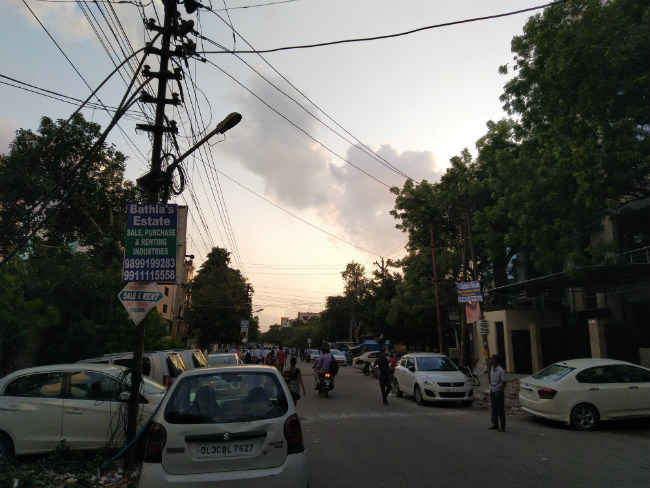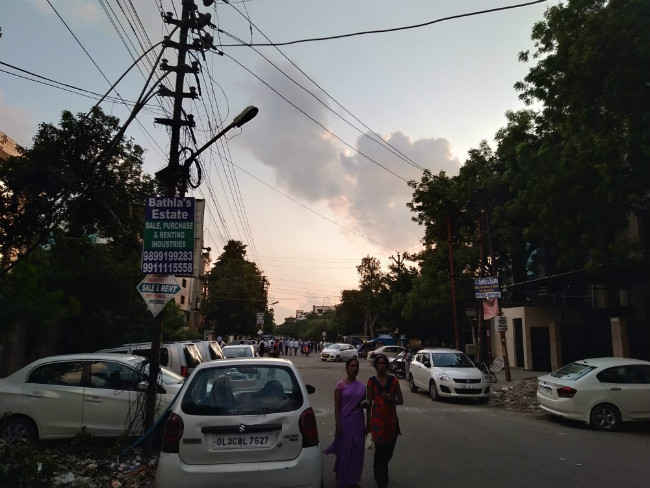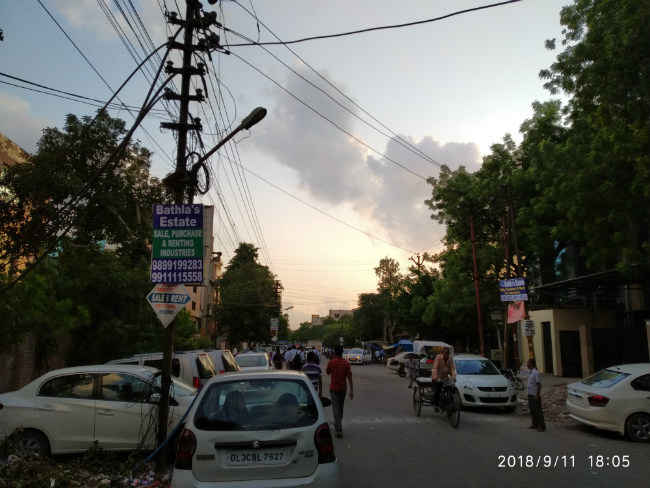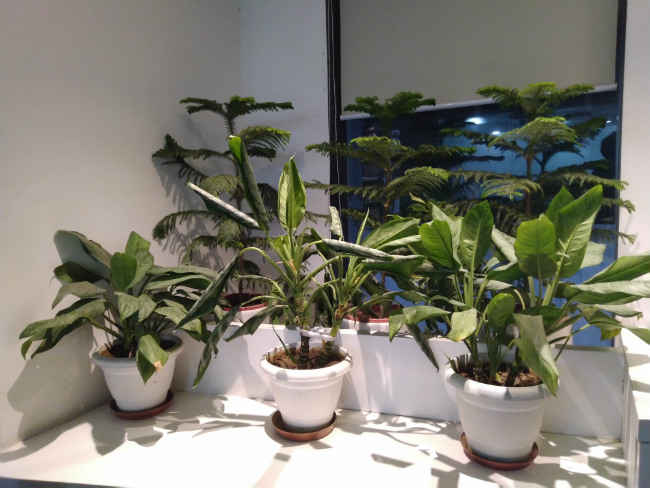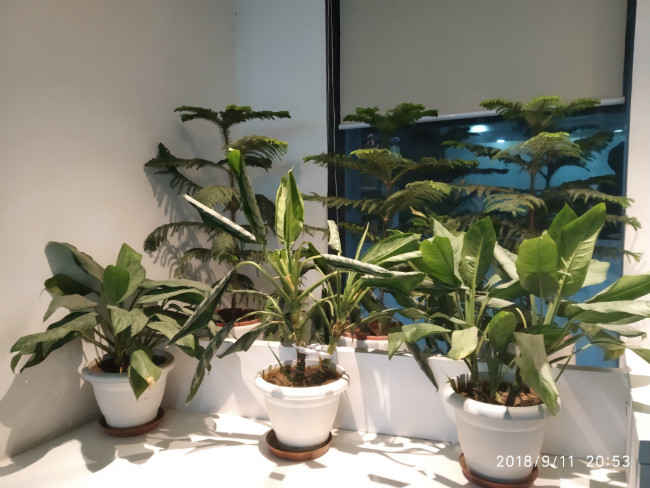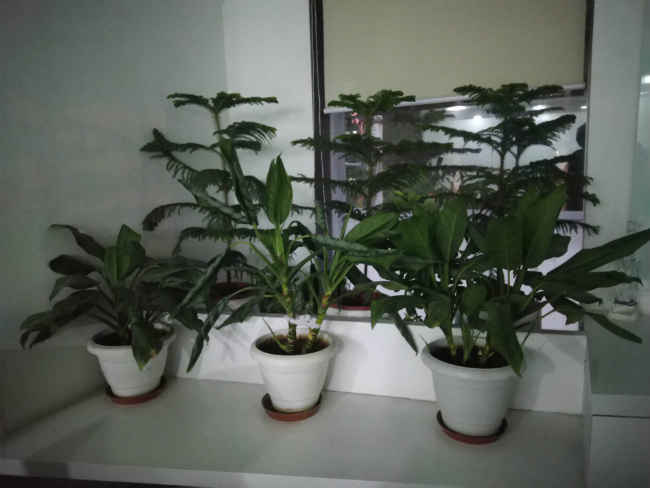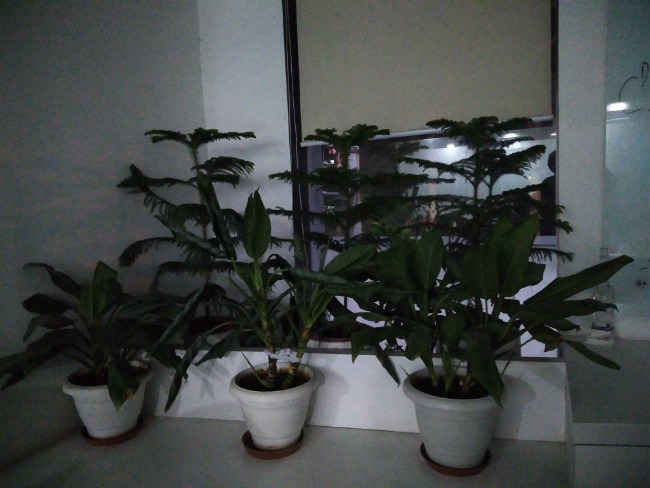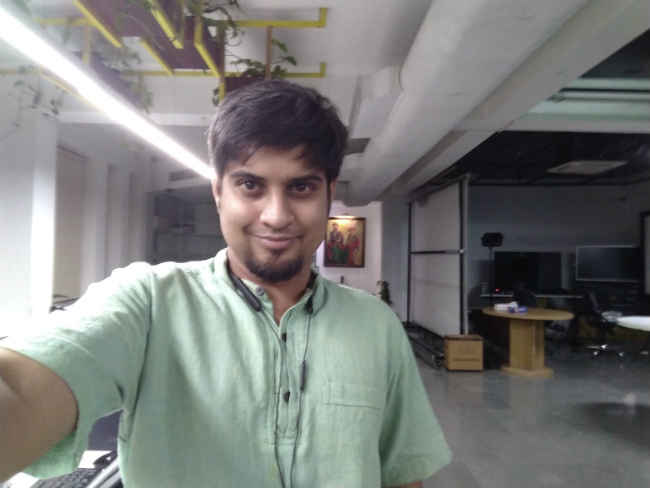Realme 2 vs Xiaomi Redmi 6 Pro vs Asus Zenfone Max Pro M1: Budget smartphones come of age
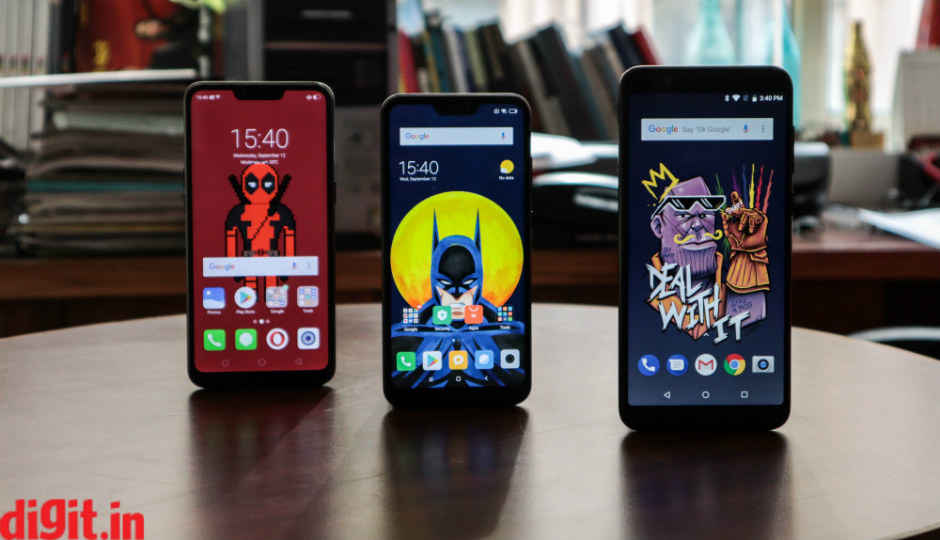
After closely examining and using the three phones, it became evident that budget phones have come of age. They are no longer a pain to use and the performance is close to more expensive phones. It’s mostly thanks to the evolution of hardware and the trickle-down effect of features. You’re actually better off buying either of the three and there’d be very little to complain.
I remember a time when using an entry-level smartphone required a lot of patience and willpower. There would be features missing and performance would be nowhere near that of the more expensive phones. Even a couple of years back, budget smartphones were marred with compromises to make the price palatable. Fast forward to 2018, budget smartphones can take on their mid-range brethren with ease. Hardware under the hood is now capable enough to run resource-intensive games and also take photos that are actually usable. As a result, if you have a tight budget, you’re not deprived of a stable experience. The prime examples of this are the two new budget phones that launched a couple of days back — The Xiaomi Redmi 6 Pro and the Realme 2. There’s also the Asus Zenfone Max Pro M1, which claims to be a mid-ranger, but priced almost the same as the two budget devices. And it’s not just them, there are countless other options in the Rs 10k-14k range. You have smartphones from Honor, some more from Xiaomi, which more or less tout similar hardware under the hood. We used two new phones and an older stalwart to put things into perspective. Choosing between the three is quite difficult, and if you’re in the market for an entry-level phone, we help you make that choice easier.
Design and display
Entry-level phones have rarely offered a premium design, until Realme came along. The Realme 2 with its diamond-cut glass back looks much more expensive than it price tag suggests, but is it durable enough? Not so. Our unit got scratches within a span of a week of reviewing the product. It also won’t last if you drop it from ear-height. And design is hardly the priority when buying a device in that segment. Usability and reliability, is more important. In that regard, the Xiaomi Redmi 6 Pro and the Asus Zenfone Max Pro M1, with its generic metal unibody design are more durable, even though it’s difficult to tell them apart from other similarly designed phones (and there are a lot of them). All the three phones have dual camera units (only the Realme 2 has it horizontally aligned) and rear-mounted fingerprint-sensors. The Realme 2 also has invisible antenna lines while other two have plastic bits on the top and the bottom.
Up front, the Redmi 6 Pro and the Realme 2 are in line with the latest trends. Both of them have a notch on top of the display, something that more expensive phones have been offering this year in the name of a more immersive screen. The notched display surely offers more screen in the same size and the minimal bezels make them look a lot more immersive. The Zenfone Max Pro M1 retains the older 18:9 display which, in my opinion, makes more sense. You end up not using that notched area anyway when watching a video.
Of the three, the Realme 2 has the largest screen at 6.22-inch while the Asus Zenfone Max Pro touts a 5.99-inch display and the Xiaomi Redmi 6 Pro offers a 5.84-inch panel. Now, while the Realme 2 has the largest panel, it also has the lowest resolution. It’s a 720p display with a 19:9 aspect ratio. You can feel the video washed out to some extent when watching something outdoors in the day. The other two has full HD panels. Also, because the Redmi 6 Pro is more compact, content feels more crisp. However, the Redmi 6 Pro doesn’t have the required certification to stream Netflix or Amazon Prime Video content, so your usability of the full HD panel is restricted. The Zenfone Max Pro M1 has no such constraints and come out as the winner in this segment.
Winner: Realme 2 in design and Asus Zenfone Max Pro M1 for the display.
Performance
While all the three devices are priced more or less similarly, the performance of each are distinctly different. The Realme 2 is powered by the Qualcomm Snapdragon 450 which is Qualcomm’s most powerful entry-level chipset right now. It shares a lot of processing prowess with the Snapdragon 625 including the GPU and the CPU cores. Only, it’s clocked lower at 1.8GHz. The Xiaomi Redmi 6 Pro is powered by the Snapdragon 625 itself, so on paper, even though they share a lot of common features, you get a higher clock speed of 2.0GHz. Interestingly, the Asus Zenfone Max Pro M1 is powered by the newer Snapdragon 636 which is also clocked at 1.8GHz, but has newer ARM cores and a better GPU.
We could have compared the three phones objectively with benchmark results, but unfortunately, as of writing this article, the Redmi 6 Pro still cannot run benchmark apps as they were locked down under embargo when we received the device. Xiaomi still hasn’t provided an update to unlock them, so we don’t have objective data for comparison. Although, I expect the benchmark scores of the Xiaomi Redmi 6 Pro to be similar to other Snapdragon 625-powered phones. If that’s the case, then the Asus Zenfone Max Pro M1 comes out on top with Xiaomi’s smartphone coming second (by a generation). The Realme 2’s Snapdragon 450, on the hand, is lower in the chipset hierarchy, but is part of this year’s lineup of chipset by the San Diego giant. It shares the same efficiency levels as the Snapdragon 625 which makes it more palatable.
Instead, we performed some real-world tests like opening apps, keeping them loaded in the background, and reopening them again after sometime. That helped us get an idea of how optimised the devices are. Resource management can make or break a device powered by an entry-level chipset. We opened around 15 apps including Facebook, Google Chrome, Instagram, PubG Mobile, Google Docs, Uber, Google Maps, YouTube and more.
Quite expectedly, there was some downtime between two apps in the Realme 2. The loading time for PubG was around 40 seconds. On the Redmi 6 Pro, the apps loaded a hair faster, but took more or less the same to load the game. The Zenfone Max Pro M1, again expectedly, came out on top with apps loading much faster, including the game. Having said that, turns out, the Realme 2 and the Redmi 6 Pro keeps more apps loaded in the background, as apps opened in the beginning were still stored in the memory. Not the game, though. The Zenfone Max Pro M1 is more aggressive in its resources management, and even the tenth app we opened (out of 15), loaded from the beginning.
With 3GB of RAM to spare (as compared to 4GB in the other two), the Max Pro M1 needs that aggressive resource management to keep things smooth. On the other hand, the Realme 2 and the Xiaomi Redmi 6 Pro, with their penchant to keep things loaded in the memory, show signs of slowing down over time.
You get 32GB of storage in the base variant of the Zenfone Max Pro M1 and up to 64GB in the other two. But the good part is that all the three phones come with dedicated slot for expandable memory. It’s particularly useful in the budget segment when most users rely on a second SIM and requires a microSD card to store movies and music.
All the three phones have Dual VoLTE and Dual Standby, which means you can still use your data even while on a call.
Winner: Based on real-world performance tests, the Asus Zenfone Max Pro M1 comes out on top.
Software
More than the hardware under the hood, it’s the software on top that matters more for everyday usage. In that regard, you get vanilla stock Android 8.1 Oreo on the Zenfone Max Pro M1. The Realme 2 runs on Oppo’s ColorOS 5.1 and the Xiaomi Redmi 6 Pro runs on MIUI 9.6. The latter two runs on their respective brand’s customised interfaces that takes a lot of inspiration from iOS. There is no app drawer so all your apps will be cluttered in the home screen. But you do get lot more features packed in the software. For instance, the Realme 2 makes more use of the notch by providing shortcuts to frequently used messaging apps while watching a video, so you can continue the conversation without pausing the video. The Redmi 6 Pro uses MIUI 9.6 which has made a name for itself as a handy UI for Indian users. There are India-centric customisations like smart SMS and data saver. However, if you want an UI that’s slick, clean and doesn’t have a steep learning, stock Android is what you should go for. The Zenfone Max Pro M1 pushes out regular security updates along with bug fixes. The UI does have a lot of features missing that are there on the other two, and that could be a problem for a power user.
Personally, I’m indifferent between MIUI 9.6 and stock Android. ColorOS 5.1 has refined the software to a large extent, but it still feels cartoonish for my taste. You can of course theme it heavily and customise it based on what you like.
There can’t be an objective winner in this category, as it’s your preference at the end of the day.
Camera
Despite being in the budget segment, all the three phones boast of camera setups akin to their mid-range siblings. With dual camera setups, portrait modes and AR filters, the features are more or less the same as more expensive phones. However, the quality won’t be the same as them and quite expectedly so. Keeping those constraints in mind, the cameras on all the three phones are quite capable.
The Realme 2 touts a 13+2MP camera with f/2.2 aperture, while the Xiaomi Redmi 6 Pro sports the same 12+5MP setup seen in the Redmi Note 5 Pro. The Asus Zenfone Max Pro uses a 13+5MP setup for photos. In each of the phones, the secondary camera is used only for capturing depth information.
A word on the camera app itself: The Asus Zenfone Max Pro M1 uses the stock app that Qualcomm supplies its vendors to test their products with. Asus could’ve customised with a better UI. The options are cluttered and requires time to find. The Realme 2 and the Xiaomi Redmi 6 Pro, on the other hand, have more or less streamlined apps that are easy to figure out. Most of the features are within quick reach and doesn’t have a steep learning curve.
Shot from Asus Zenfone Max Pro M1
Shot from Realme 2
Shot from Xiaomi Redmi 6 Pro
In broad daylight, the photos from all the three phones take comparably good photos. The colours come out bright and crisp. However, if you look closer, you’ll notice the trees on the right in the photo taken by the Realme 2 have lesser details, as compared to the ones taken by the Redmi 6 Pro and the Zenfone Max Pro M1. This indicates that the dynamic range is better on the other two phones. To be honest, there’s very little difference in each of the three photos and it was very difficult to pick a winner.
Shot from Asus Zenfone Max Pro M1
Shot from Realme 2
Shot from Xiaomi Redmi 6 Pro
Indoors, the decision even more difficult, as all the three phones produce more or less similar results. None of them are bad in the aesthetic sense, and will do the job pretty well. Although, a thing to note here is that the Zenfone Max Pro M1’s shutter is a tad slower than the two. The Redmi 6 Pro is the fastest to take the shot while Realme 2 lies somewhere in between.
Shot from Asus Zenfone Max Pro M1
Shot from Realme 2
Shot from Xiaomi Redmi 6 Pro
Under low light, the Realme 2 produces the noisiest pictures. It’s visibly underexposed as compared to the other two. Between the Zenfone Max Pro M1 and the Redmi 6 Pro, Asus’ smartphone has more details if you pixel peep. Although, the Redmi 6 Pro produced more saturated colours. Neither of the three could focus well, though. And the Max Pro M1’s shutter was slower, as it switched to the low-light mode which keeps the shutter open longer.
Portraits are the best on the Redmi 6 Pro. It’s the same algorithm Xiaomi uses in the Redmi Note 5 Pro and the Mi A2, both of which are quite capable in blurring the background well enough. The Realme 2, however hid facial features the most. The skin tone is visibly brighter as compared to the other two. The Max Pro M1’s facial details are by far the most accurate.
Shot from Asus Zenfone Max Pro M1
Shot from Realme 2
Shot from Xiaomi Redmi 6 Pro
The skin-softening algorithms work the most when taking selfies from the Redmi 6 Pro and the Realme 2. My face had a different glow in both the photos and the dark circles were almost invisible. The Zenfone Max Pro M1’s selfie was the most accurate, but it failed to invert the photo automatically, and the noise levels in the shadows were higher.
Winner: It was quite difficult to pick a winner here as the differences were minimal. The camera prowess is proof that corners still need to be cut to meet the asking price, but if I have to choose, I’d go for the Redmi 6 Pro here. The camera is fast enough and the results are usable for social media. It’s especially adept at taking portrait shots. The Asus Zenfone Max Pro M1 comes close because of the poorly designed camera app. The Realme 2 turns out to be the best phone for selfies.
Battery
It’s a case of sheer numbers when it comes to the battery capacity of the three phones. The Asus Zenfone Max Pro M1 beats the game hands down with a 5000mAh battery, although after the recent updates, users are reported a drop in battery life which should get fixed over time. In my use, the Zenfone Max Pro M1 lasted well over a day. The Xiaomi Redmi 6 Pro just about manages to get you through the day and so does the Realme 2. There’s a difference of about 400mAh between the two. If you’re into gaming (which all the three phone is wonderfully capable of), the battery drain will be much faster and you’re likely to out of charge by evening in the Redmi 6 Pro and the Realme 2, while on the Max Pro M1, you’ll last a little longer.
The Asus Zenfone Max Pro M1 also supports fast charging which isn’t present in the other two phones. The 5,000mAh battery takes around two hours to top up fully.
Winner: The Asus Zenfone Max Pro M1 is the go-to phone if you want the maximum battery life in that price range, although the other two will also last you till bedtime if judiciously used.
Winner Winner Chicken Dinner
After closely examining and using the three phones, it became evident that budget phones have come of age. They are no longer a pain to use and the performance is close to more expensive phones. It’s mostly thanks to the evolution of hardware and the trickle-down effect of features. You’re actually better off buying either of the three and there’d be very little to complain. As far as the overall experience is concerned, there’s very little difference in them. But it all boils down to what you prefer — If a premium design and a good selfie camera is what you prefer, the Realme 2 starting at Rs 10,990 for the 3GB/32GB variant. The Zenfone Max Pro M1 will last the longest and will also offer that extra firepower at an even cheaper price tag of Rs 10,499. The Xiaomi Redmi 6 Pro is also priced at Rs 10,999 and is the best choice for smartphone photographers in that segment.


